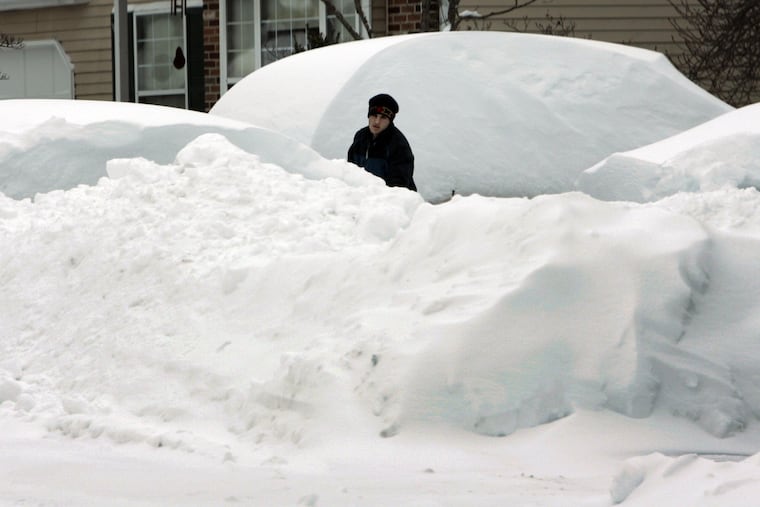A snow record was confirmed for Delaware. It just took 11 years and a federal investigation.
Officially on Feb. 7, 2010, 28 inches of snow was on the ground in central Delaware, a state record for snow depth.

It took more than a decade to declare a winner and resolve this mystery of the deep, but Delaware has a new snow-depth champion.
After an investigation, the National Center for Environmental Information on Wednesday declared that the 28 inches measured in the Greenwood area, in central Delaware, on Feb. 7, 2010, was the deepest snow cover ever observed in the Diamond State.
That depth was achieved after a profoundly heavy snowfall — more than 2 feet officially in Wilmington — on Feb. 5 and 6. That was followed by another heavy snow on the 9th and 10th, but evidently the depth didn’t quite measure up.
In those same two storms, Philadelphia was entombed in 44.5 inches of snow, but officially the depth at Philadelphia International Airport never exceeded 20 inches.
» READ MORE: Ten years ago this week, Philly got 44 inches of snow in 5 days. Why this winter is so different.
A word about snow depth: It is not to be confused with snowfall. The latter includes all amounts before any settling, melting, or assaults by rain, sleet, or assorted human interventions.
Snow “depth” by government protocol is measured once a day, usually at 7 a.m.
It is not at all clear what prompted the investigation.
The government is rather persnickety about records. The official measurement of 30.7 inches of snow reported at Philadelphia International Airport on Jan. 7-8, 1996, wasn’t officially certified as a record until 2000.
This investigation might have been more complicated since it involved a report from a cooperative-observer network, rather than a “first order” government-supervised station such as Philadelphia’s. NCEI officials weren’t immediately available for comment.
The announcement came as a surprise at the Mount Holly National Weather Service Office, especially since the investigation, itself, was a surprise.
Meteorologist Patrick O’Hara pointed out that only a handful of current staffers were working in Mount Holly in 2010.
Tony Gigi, who was there in 2010 and is now retired, said this was news to him, “and probably to the observer.”